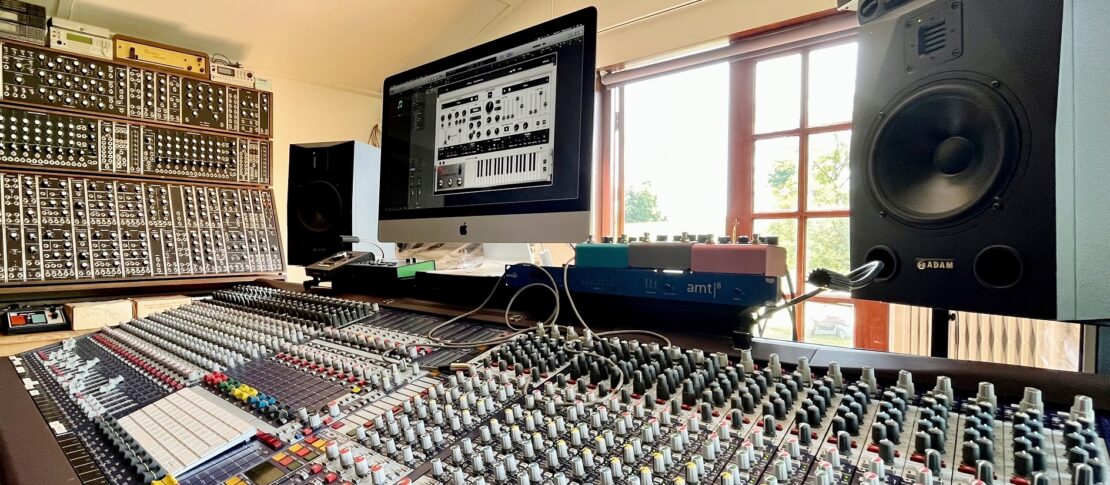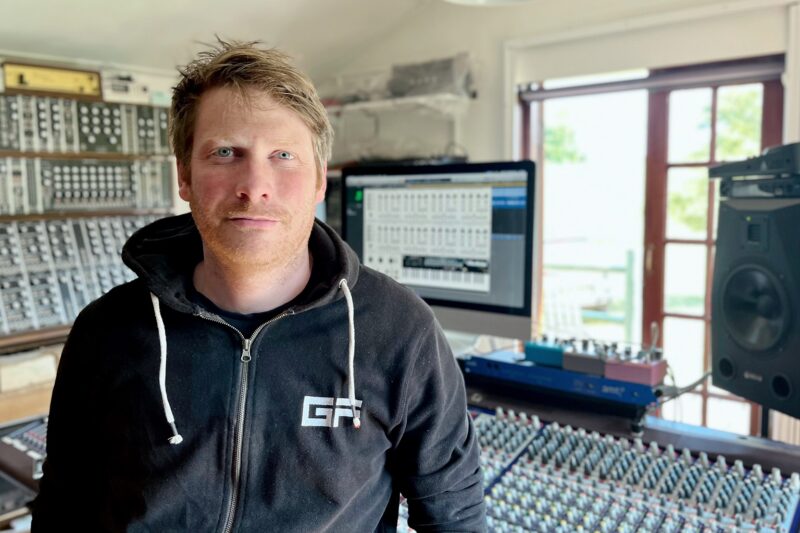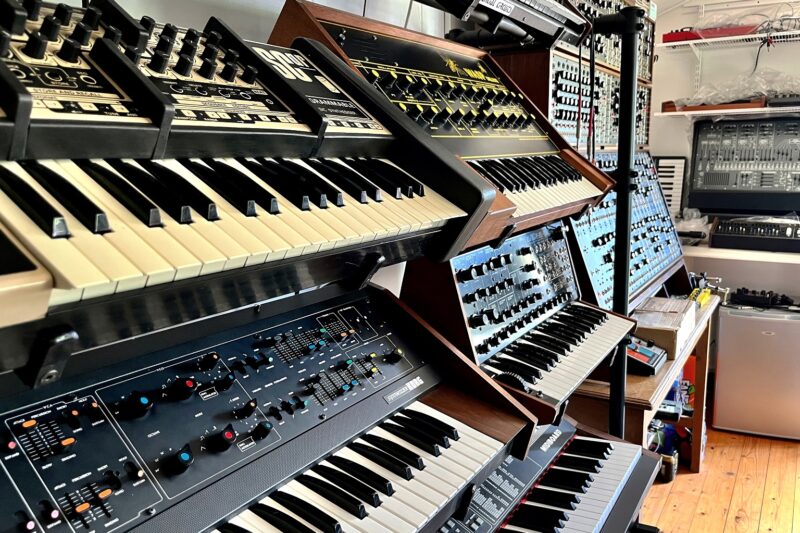
GForce: Pioneering Soft Synths for Over Twenty Years
For over two decades, GForce Software has been a driving force in the music industry, developing quality software instruments used throughout the world. By re-engineering classic synths into accessible, digital instruments, the team at GForce have helped music producers tap into legendary sounds and effects, that have been available but to a few.
For GForce it all began in 2003 with the M-Tron, a digital realisation of the classic Mellotron. Since then, the company has developed many cutting-edge, software synths, all from their modest UK base, all the while using ADAM Audio to ensure the team are getting the best referencing and sound.
Speaking to GForce Software Manager Graeme Rawson, ADAM Audio digs a bit deeper in the company’s beginnings, explores how the company goes about their development, and how the audio plays an important part in the quality control process.
Can you tell us a little bit about the history of the company, and what kind of products are you specializing in?
GForce Software has been pioneering software instruments since 2003. It was founded by Chris Macleod and Dave Spiers — two music industry veterans who worked with the likes of Underworld, Debbie Harry, Keith Emmerson —releasing the world’s first Mellotron software instrument, M-Tron, with a sample library initially created for their own use. We aim to offer the highest audio quality products in the virtual instrument arena.
What has been your most successful product so far?
Historically that would be M-Tron and M-Tron Pro. It reintroduced the Mellotron to a new generation of musicians and reminded some older users what they’d lost by ditching it for digital samplers in the 80s. More recently, we’ve had great success with OB-E, the first software emulation of an Oberheim 8-voice. It was so sonically accurate that Tom Oberheim and Marcus Ryle approached us about making it official. Which we were delighted to do. Carrying the official Oberheim mark has opened it up to a world of new users for us.

What is your personal background and how do you happen to work at GForce?
I was a jobbing sound engineer and music producer in my local area for some time, so I come from a slightly old school studio engineering and mixing background before I started working part-time for Dave and Chris on technical support. Back then GForce was a two-man show really and they’d had enough of doing tech support themselves.
Could you describe the facilities at GForce, do you have a lab, different workstations, a studio, etc.?
On a day-to-day basis we all work remotely. It’s always been that way, so it’s not a pandemic hangover. However, we have the GForce Studio as a focus point when we need it. The studio is in a beautiful secret location not too far from Reading, UK, with quiet rolling countryside views.
It is packed to the rafters with synths, mostly vintage and mostly working. I can’t possibly list the entire contents, but of note, we have our Oberheim 8-voice, a CS80, a couple of Prophet 5s, Pro One, OB-1, Moog 55 modular, three vintage ARP Odysseys, two Minimoogs… almost anything significant in the classic synth world. This all route through sub-mixing stations to our big old Midas main desk, and out of a pair of trusted ADAM Audio P22A studio monitors, with subwoofer.
How do you at GForce pick a certain piece of hardware and decide to build a digital model? Is there any “agony of choice” or heated discussions within the team?
We’ve always believed that we can’t work on something for as long as we do without loving it. Every synth we’ve ever modelled has been because we love the original and we respect its story and place in synthesiser heritage. It’s also important that we have the proper hardware available and in good condition. There’s a secondary point of consideration about what can we add on to the original design to expand it into areas which the original designers couldn’t have dreamed of. We have to be able to give musicians and producers something new as well as honouring our inspirations. I think there is some agony of choice, yes, but as we’re a growing team at the moment, and we’re beginning to be able to widen our choices.
In your own words, can you walk us through the development process, for example of your latest Oberheim SEM Monosynth plugin?
Each instrument process can be quite different. For example, with SEM we already had the core sound elements built as part of OB-E. We took a SEM from the OB-E and carefully chose which features would enhance the experience of a monosynth, adding the arpeggiator and sequencer and simplified the effects to suit it.
For something like OB-E however, the process is much longer as the core sound elements had to be built from scratch. We already had a genuine vintage 8-Voice that used to belong to Chick Corea, and we acquired a newer Tom Oberheim branded SEM to help. We spent many hours playing the 8-Voice (which stayed at the studio) and our dev took the new SEM home with him to work remotely. All eight original SEMs and the new SEM were scoped and measured, but there’s no real secret here. We just spent many hours comparing the original, new SEM and OB-E over and over again. It takes time, patience, and experience, but we were able to get the sound to be uncannily accurate.
After that the instrument can come together through testing iterations, there are two different considerations here; bugs and musicality. We don’t just test for bugs, which are obvious and need to get squished, but also for how the instrument plays and performs. Although in an ideal world every design choice we make would be perfect from the start, there’s nothing quite like playing an instrument to realise it isn’t, and the tweaking process can go on for some time.

What role do studio monitors play in the whole process?
Studio monitors are critical to the referencing process. You need to trust the monitor output to show every frequency and dynamic change in a predictable and reliable way. The ADAM Audios in our main studio give us confidence that we can trust what we’re hearing. Several of us run smaller ADAM Audios in our various home studio setups too and the translation between the systems works really well.
At what point, if at all, do you involve the original manufacturer, and how does it get their blessing?
In the case of OB-E, it was the evening before we released it! Dave had made this incredible teaser video for OB-E, where it looked like he was working on our 8-Voice and at the end, but it was really OB-E. This found its way to Marcus Ryle, who showed it to Tom Oberheim, and they got in touch. When they suggested a collaboration, it was a “pinch yourself moment” for us, but we were so excited to be working with Oberheim, not just because of their history, brand and presence, but because of the unique insight that they could give us into the original instruments. So, we started working on Oberheim OB-E v2 pretty much straight away, it contained a raft of sonic changes based on advice from Marcus and Tom. Very subtle things, but really valuable to making our Oberheim the most accurate possible in software.
And for M-Tron Pro, although the Mellotron brand is owned by someone else now, the original manufacturers are still going in the form of Streetly Electronics. It’s been amazing to work with Streetly Electronics to release their incredible collection of tapes as expansion packs for M-Tron Pro, and to have their ear and expertise on hand whilst working on M-Tron Pro and our MkII.
Can you think of a piece of information that would surprise users of your products?
I don’t think people realise how small we are. We’re just a team now of around 10 people, but for the majority of GForce’s life we’ve just been 2-4 people, coming together to make things we love. It’s traditionally taken us a long time to develop instruments, multiple years for each. We’re bigger now, and we’re seeing a huge increase in our output because of it, and that’s really exciting.
Many people out there have been using virtual models of iconic equipment for many years without ever getting their hands on the real thing. Do you think the “halo” of the icon will fade away over time or is this something you think can be transferred to the digital world, especially with good emulations?
Interesting. A big part of the halo, as you called it, is the history of the instrument, what records it was used on, which iconic sounds it created. I would have thought that eventually that would fade, but I’m not sure that’s the case. True classic sounds and songs are hanging around and being reused and reinvented for new audiences.
We can also see that analogue synthesis, vintage, cloned and new, is having a renaissance and software allows users to explore those sounds at a more accessible point, both in terms of cost and usability. I truly believe that software can sound indistinguishable to hardware, so even if the icon itself fades away, the sound I don’t think will. The sound of analogue is so ingrained in our collective consciousness that even new synths that aren’t trying to model anything specific are including analogue imperfections into their design.
![Interview with Caspar Bock [Baby Audio]](https://www.adam-audio.com/blog/wp-content/uploads/resized/2022/12/adam-audio-blog-meet-caspar-bock-baby-audio-interview-thumbnail-300x200-c-default.jpg)